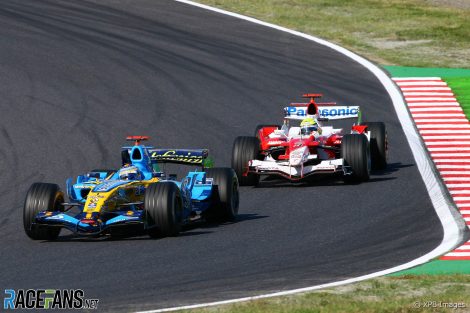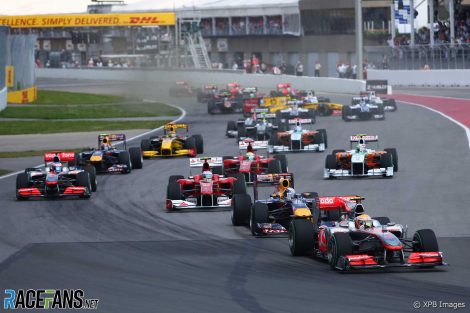Michelin have not been involved in Formula 1 for over 16 years, and some bold comments from the tyre manufacturer’s CEO earlier this week suggested that is not about to change.
Florent Menegaux was frank in his assessment of Formula 1 and the FIA’s invitation to tender for the exclusive tyre supplier rights to the world championship, currently opened for the 2025-27 F1, F2 and F3 seasons. Dismissing the FIA’s insistence that F1’s tyre supplier make compounds that continue to feature a ‘cliff’ where performance drops off exponentially, Menegaux said Michelin had no interest in making tyres that “destroy themselves”.
F1’s unique tyre philosophy over the last decade has separated it from virtually all other international racing series. No other championship makes tyres which degrade rapidly a central focus of its racing.
Some regard high-deg tyres as critical to generating intrigue and strategy variance in a series where refuelling is banned. Others wince at the idea that drivers should prioritise managing their rubber during a race to maximise their performance, rather than push flat-out over every corner of every lap.

But is Menegaux right to so quickly dismiss F1 and the FIA’s attitude towards the tyres they want to see in the sport over the years to come?
Formula 1 has been a single-tyre category ever since Michelin left the world championship at the end of 2006. Bridgestone spent four seasons as the exclusive supplier between 2007 and 2010, before Pirelli took over at the start of 2011.
Pirelli returned to Formula 1 after 20 years with tyres which were very different to those raced in F1 previously. This was intentional. Just two weeks before the FIA named them as F1’s next supplier in June 2010, the Canadian Grand Prix took place, a race that changed the sport’s philosophy over tyres.
Advert | Become a RaceFans supporter and
The typical tyre strategy in 2010 was for drivers to start the race on the softer compound and then make a single pit stop for the harder tyres to run to the end. However at the Circuit Gilles Villeneuve, with track temperatures approaching 40C, Bridgestone’s chosen super-soft and medium tyre compounds wilted.

The dramatic lap time difference between the two compounds and high degradation led to an exciting, unpredictable race with many different strategies playing out. F1 and the FIA liked what they saw,…
Click Here to Read the Full Original Article at RaceFans…

